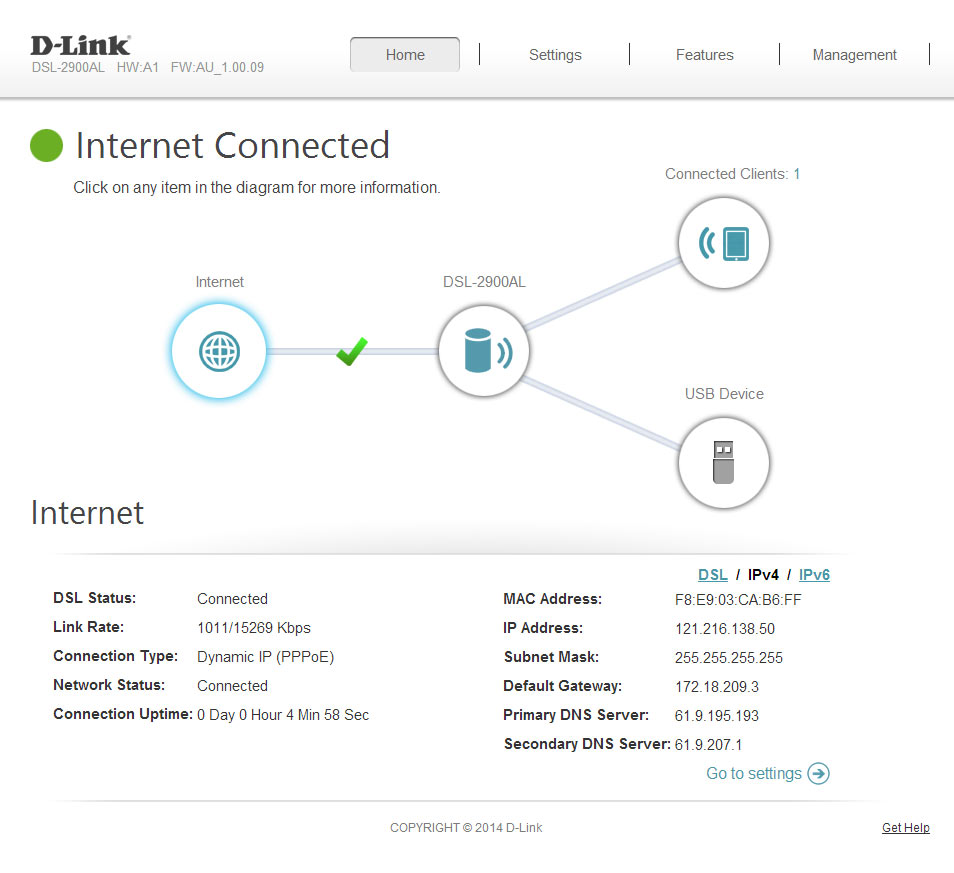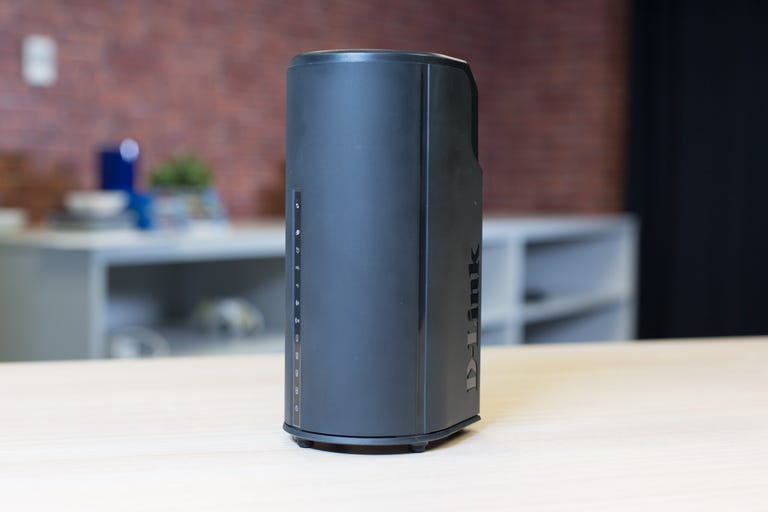 Why You Can Trust CNET
Why You Can Trust CNET D-Link Viper DSL-2900AL Dual Band AC1900 Modem Router review: This modem-router needs more work before it's ready for prime time
For the price bracket, the Viper lacks features and its web UI is clearly a work in progress.
D-Link's latest modem-router, the Viper DSL-2900AL, tries its best to look premium. It comes in a black and purple box with reflective coating and a ribbon hinge. It looks nearly identical to its forerunner, the DSL-2890AL, but here D-Link has opted for a matte black instead of piano black.
The Good
The Bad
The Bottom Line
From an internals perspective, it swaps out the Broadcom BCM4331 that controls the 2.4GHz wireless for the BCM4360, which on paper should give better performance. But at AU$329, does the Viper justify the price difference from the AU$219 DSL-2890AL?
Read more: Wi-Fi 6: Better, faster internet is coming this year -- here's everything you need to know
Design, ease of use and features
As a cylinder, the Viper isn't going to be wall mounted any time soon. A full bevvy of status lights line the front, with individual lights for 2.4 and 5GHz, line sync and Internet connection, and all four gigabit Ethernet ports. This makes the Viper excellent for troubleshooting should something go wrong.

D-Link's web UI has received a significant upgrade, with a huge focus on ease of use. Even QoS is made easy by showing the devices connected to your network, and then allowing you to drag and drop them into ready-made priority tiers. While this makes things simple, it also removes granular control over priority - you just have to trust the router's built in settings. Sadly local help is gone, linking instead to D-Link's online general support site. Page load times are also slow compared to other UIs.
Easy to organize, but little customization.
I also have to note it's clearly a work in progress -- the initial firmware wouldn't display elements in Chrome, requiring an update. Twice when clicking the Home menu item, it told me the router simply wasn't there.
D-Link is one of the few vendors to offer a dedicated mobile web interface via the Viper. It is very limited though, allowing you to connect to or disconnect from the Internet, change basic Wi-Fi and guest Wi-Fi settings, and view firmware information. Thankfully there's a link to the more detailed desktop version if you need to configure anything else -- although on Chrome on my Android phone, this simply displayed a blank template, much like the initial firmware did for desktop Chrome.
D-Link also offers access to its router via its mydlink app. Just like the mobile interface options are limited, allowing you to view and block connected devices, check your Internet and LAN IP, and alter basic Wi-Fi settings.
Parental control is applied on a per device basis, but you won't find the settings anywhere in the menu -- you'll need to click the appropriate device in the initial network map and change things through there. Frustratingly, the second I turned parental control on for our desktop, everything was immediately blocked -- including the router interface -- despite the schedule being set to "always off". We didn't even get a chance to change any settings. Another odd choice: while website filters allow either a blacklist or whitelist, they are applied across the board, rather than per device or interface.
Guest Wi-Fi access is available on 2.4 and 5GHz, and Dynamic DNS is supported through D-Link's own service, DynDNS.org, and surprisingly, it offers a "manual" setting.
Also new is a live-updated line graph for Internet, LAN, 2.4GHz and 5GHz performance, which should help with troubleshooting and is always welcome -- although you'll only see 16 seconds of history at any one time.
While there are two USB ports, functionality is limited, only supporting storage. This can be accessed over FTP, SMB, or online using D-Link's Shareport Web Access feature. DLNA is also supported.
Performance
I tested with firmware AU_1.00.09, and used iPerf to determine the maximum wireless speed at three locations: the next room, immediately upstairs with some furniture in the way, and one room away from immediately upstairs.
The wireless client used was an Asus G550 laptop with a 2x2 Intel AC7260 wireless card, as an indicator of average performance. Each WLAN is set to WPA2 personal encryption and a clear channel is chosen. Where possible the highest channel bandwidth is chosen, either 40 or 80MHz depending on the wireless standard. Where appropriate, transmission standard is set to 802.11n or 802.11AC only.
Due to the variable nature of wireless and surrounding WLANs, each unit was tested multiple times at various times of day to achieve a best case scenario performance value. Your own environment will see different results.
802.11n 2.4GHz performance
- Location 1
- Location 2
- Location 3
There's good wireless performance here, but as you can see, the significantly cheaper DSL-2890AL keeps pace. The Viper will likely show its true colours in a network environment with several 2.4GHz devices, rather than just the single client.
802.11n 5GHz performance
- Location 1
- Location 2
- Location 3
802.11n 5GHz performance is within expected norms, although the Viper takes top honours in the long-distance location 3.
802.11ac performance
- Location 1
- Location 2
- Location 3
802.11ac performance tends to be similar across all premium modem/routers we've tested, and there's no difference here.
Storage was tested over gigabit LAN with a SanDisk Extreme NTFS formatted 64GB USB 3.0 drive plugged into the fastest USB slot, transferring a 100MB file via SMB.
USB storage performance
- Read
- Write
D-Link's USB storage performance is only a little improved here compared to the DSL-2890AL, and it's within margin of error. Needless to say as with most modem-routers, the figures are terrible.
Conclusions
The Viper DSL-2900AL has its work cut out for it. In its price range, you have modem/routers with significantly better feature sets like the Asus DSL-AC68U. On the wireless performance front, D-Link's own DSL-2890AL presents much better bang for your buck. There's every chance this one will turn into a winner with a firmware upgrade and price drop -- but for now I'd suggest you check out other options.



